Refine search
Actions for selected content:
3023 results in Probability theory and stochastic processes
14 - Noncommutative probability spaces
-
- Book:
- Random Matrices: High Dimensional Phenomena
- Published online:
- 05 March 2012
- Print publication:
- 08 October 2009, pp 411-423
-
- Chapter
- Export citation
2 - Lie groups and matrix ensembles
-
- Book:
- Random Matrices: High Dimensional Phenomena
- Published online:
- 05 March 2012
- Print publication:
- 08 October 2009, pp 42-83
-
- Chapter
- Export citation
1 - Metric measure spaces
-
- Book:
- Random Matrices: High Dimensional Phenomena
- Published online:
- 05 March 2012
- Print publication:
- 08 October 2009, pp 4-41
-
- Chapter
- Export citation
7 - Young tableaux
-
- Book:
- Random Matrices: High Dimensional Phenomena
- Published online:
- 05 March 2012
- Print publication:
- 08 October 2009, pp 227-252
-
- Chapter
- Export citation
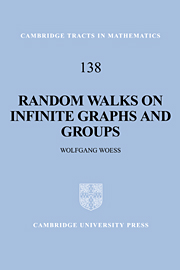
Random Walks on Infinite Graphs and Groups
-
- Published online:
- 22 September 2009
- Print publication:
- 13 February 2000
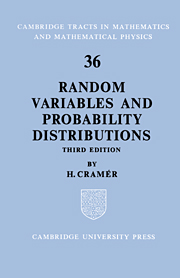
Random Variables and Probability Distributions
-
- Published online:
- 22 September 2009
- Print publication:
- 31 January 1970
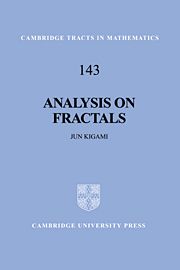
Analysis on Fractals
-
- Published online:
- 22 September 2009
- Print publication:
- 07 June 2001
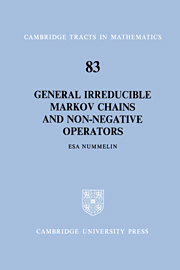
General Irreducible Markov Chains and Non-Negative Operators
-
- Published online:
- 19 September 2009
- Print publication:
- 18 October 1984
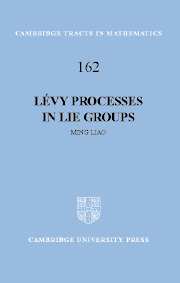
Lévy Processes in Lie Groups
-
- Published online:
- 19 August 2009
- Print publication:
- 10 May 2004
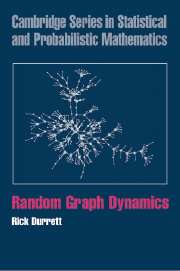
Random Graph Dynamics
-
- Published online:
- 18 August 2009
- Print publication:
- 23 October 2006
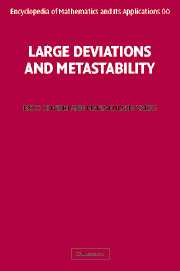
Large Deviations and Metastability
-
- Published online:
- 13 August 2009
- Print publication:
- 21 February 2005
3 - Conditional Probability
-
- Book:
- Elementary Probability for Applications
- Published online:
- 05 June 2012
- Print publication:
- 31 July 2009, pp 81-113
-
- Chapter
- Export citation
Index of Examples
-
- Book:
- Elementary Probability for Applications
- Published online:
- 05 June 2012
- Print publication:
- 31 July 2009, pp 241-241
-
- Chapter
- Export citation
1 - Basic Concepts
-
- Book:
- Elementary Probability for Applications
- Published online:
- 05 June 2012
- Print publication:
- 31 July 2009, pp 1-31
-
- Chapter
- Export citation
2 - Combinatorial Probability
-
- Book:
- Elementary Probability for Applications
- Published online:
- 05 June 2012
- Print publication:
- 31 July 2009, pp 32-80
-
- Chapter
- Export citation
Frontmatter
-
- Book:
- Elementary Probability for Applications
- Published online:
- 05 June 2012
- Print publication:
- 31 July 2009, pp i-iv
-
- Chapter
- Export citation
Preface
-
- Book:
- Elementary Probability for Applications
- Published online:
- 05 June 2012
- Print publication:
- 31 July 2009, pp vii-x
-
- Chapter
- Export citation
7 - Option Pricing
-
- Book:
- Elementary Probability for Applications
- Published online:
- 05 June 2012
- Print publication:
- 31 July 2009, pp 229-236
-
- Chapter
- Export citation
Index of Terms
-
- Book:
- Elementary Probability for Applications
- Published online:
- 05 June 2012
- Print publication:
- 31 July 2009, pp 239-240
-
- Chapter
- Export citation
Normal Table
-
- Book:
- Elementary Probability for Applications
- Published online:
- 05 June 2012
- Print publication:
- 31 July 2009, pp 237-238
-
- Chapter
- Export citation
